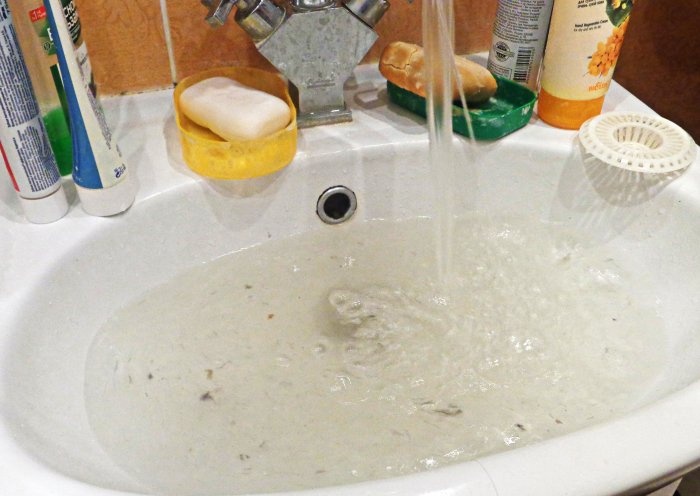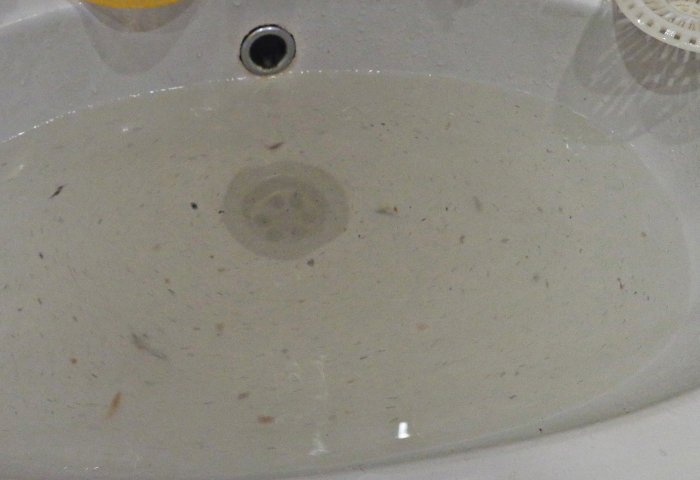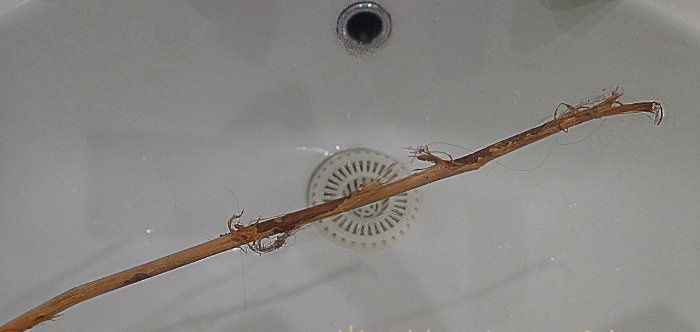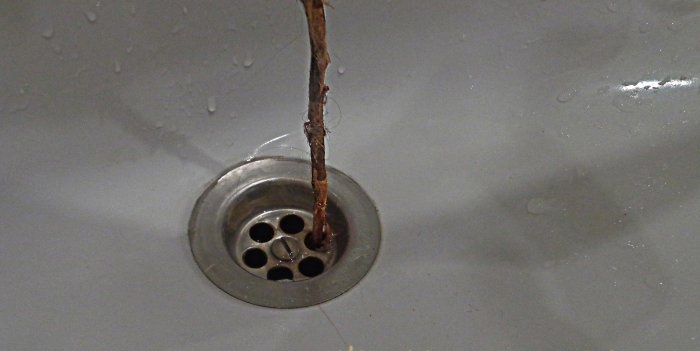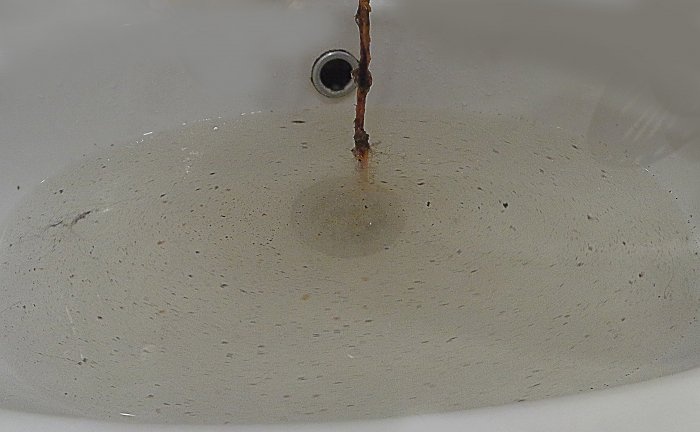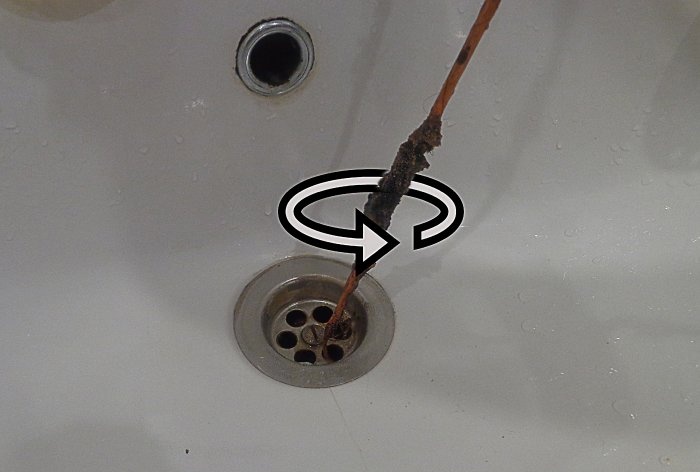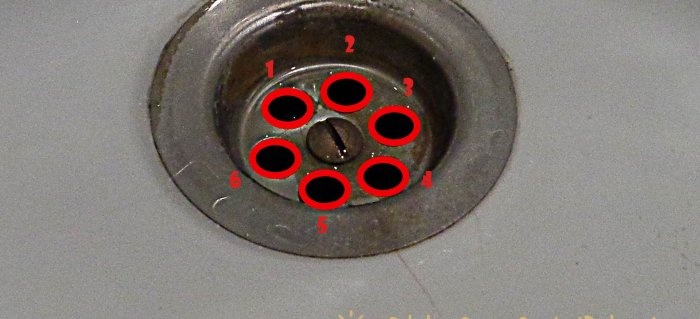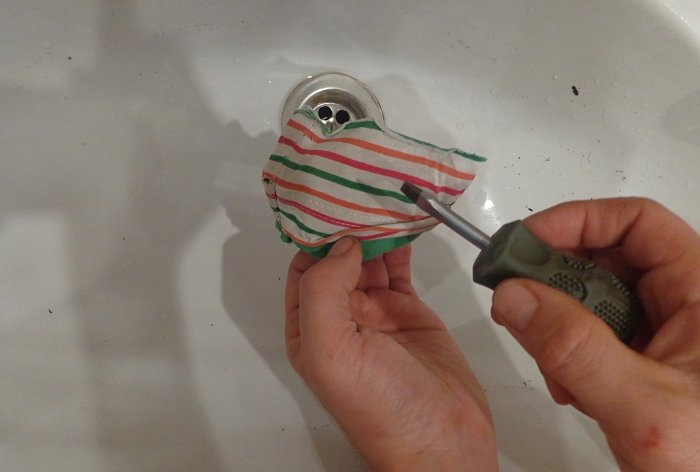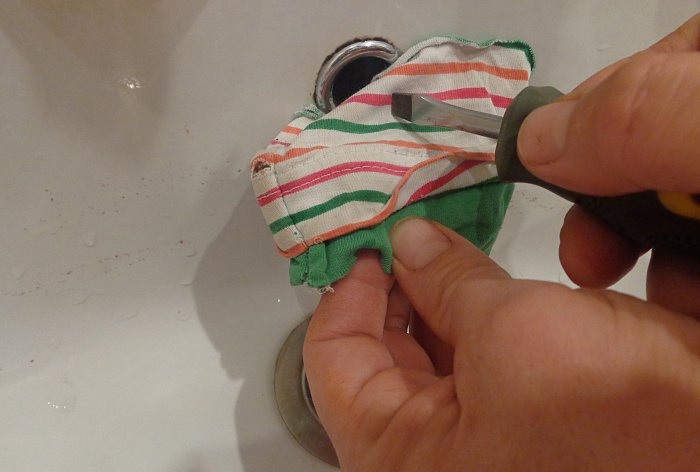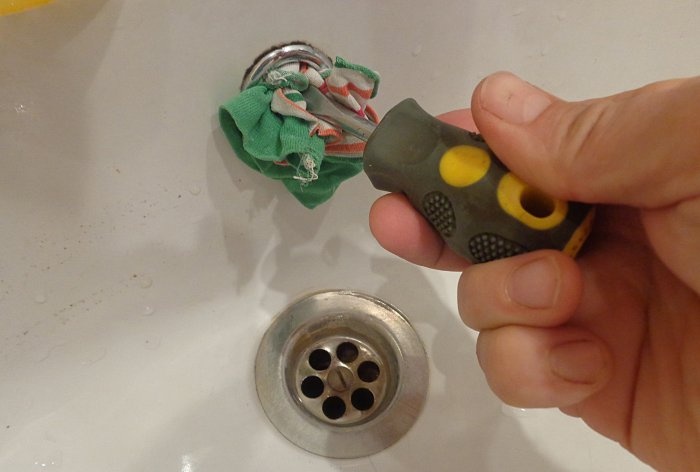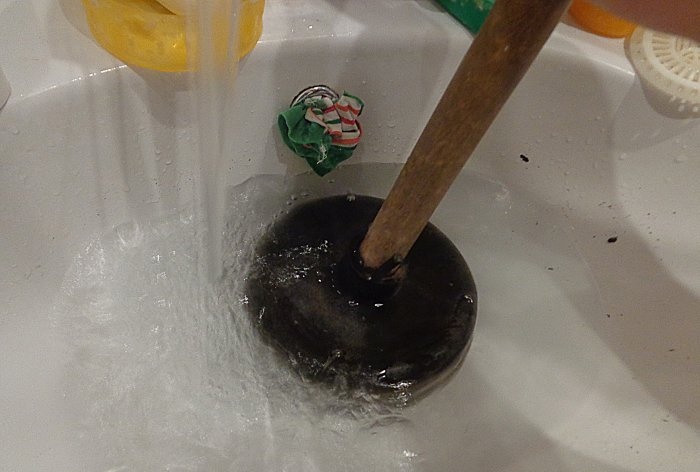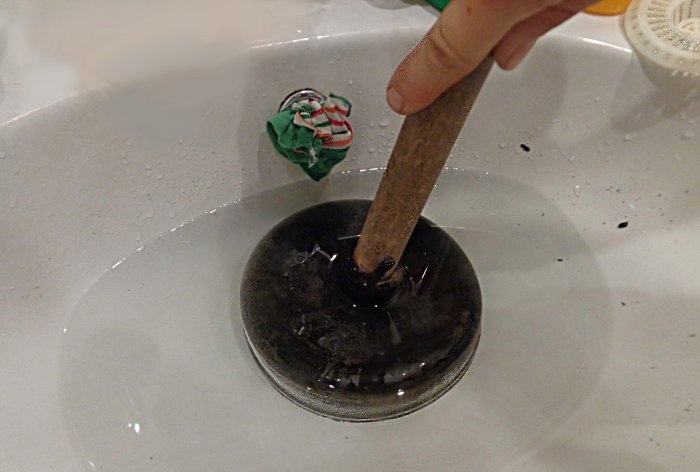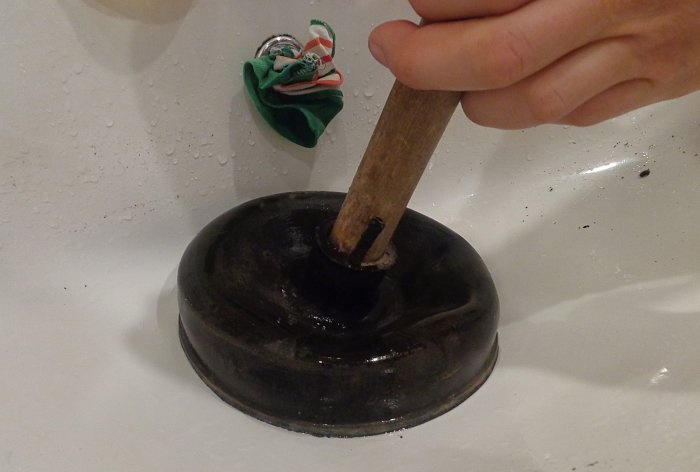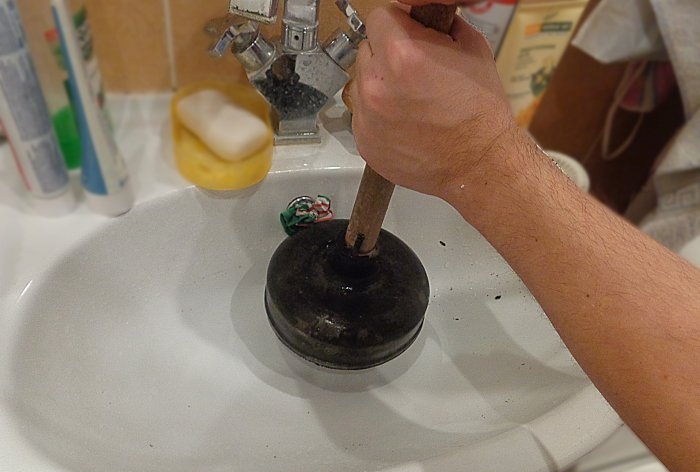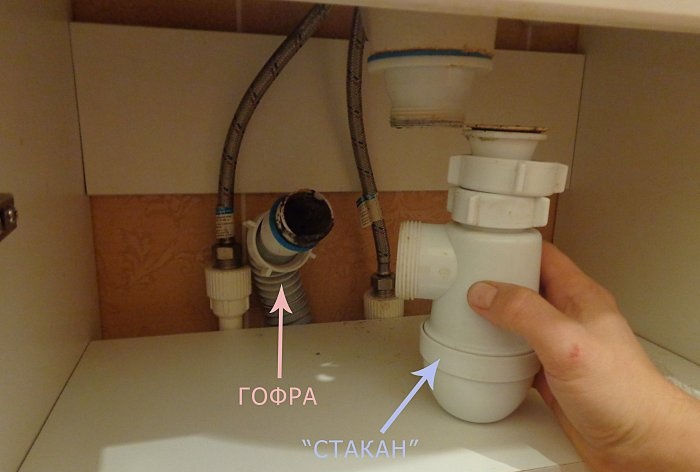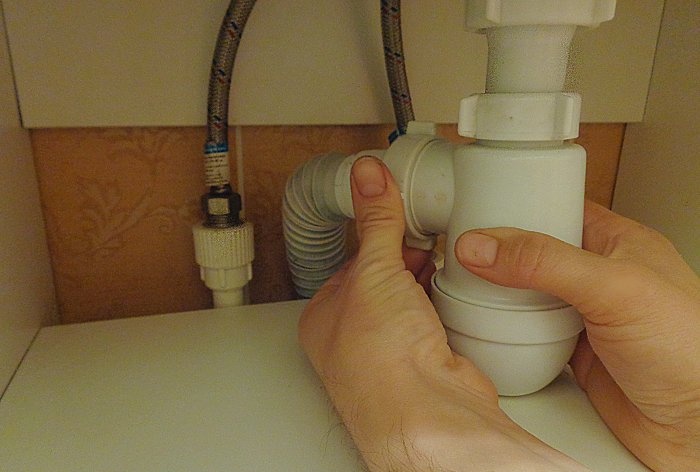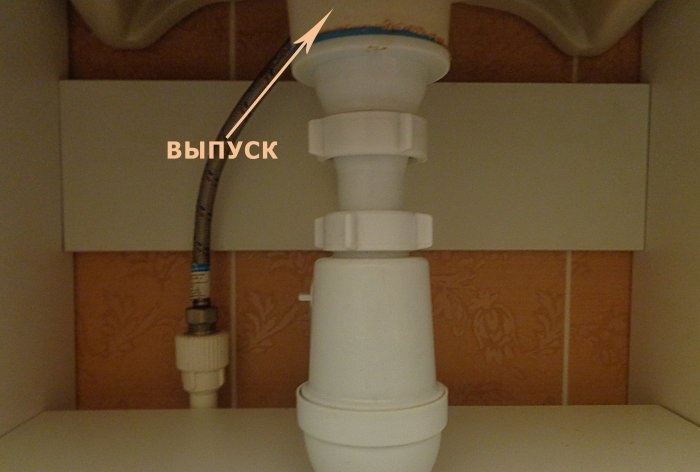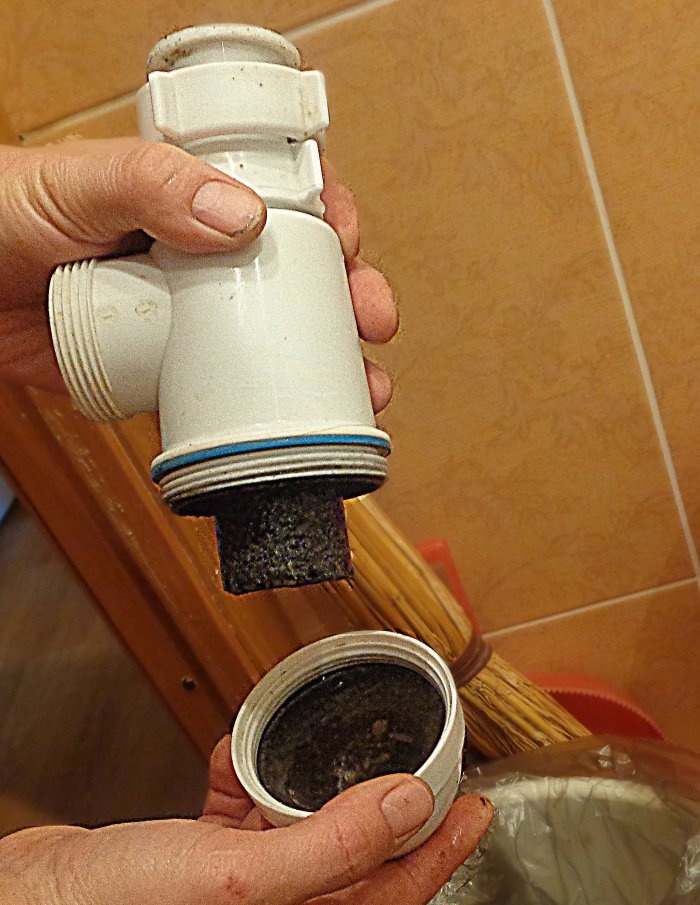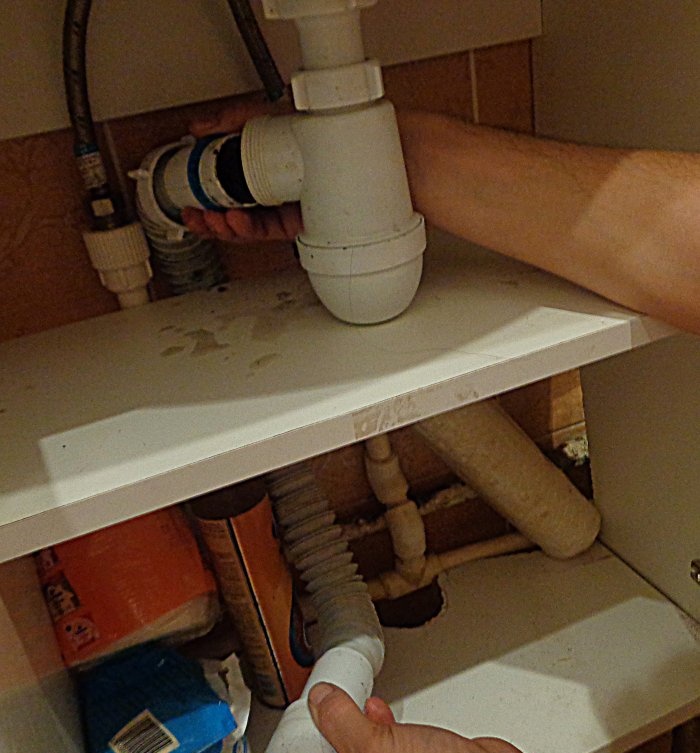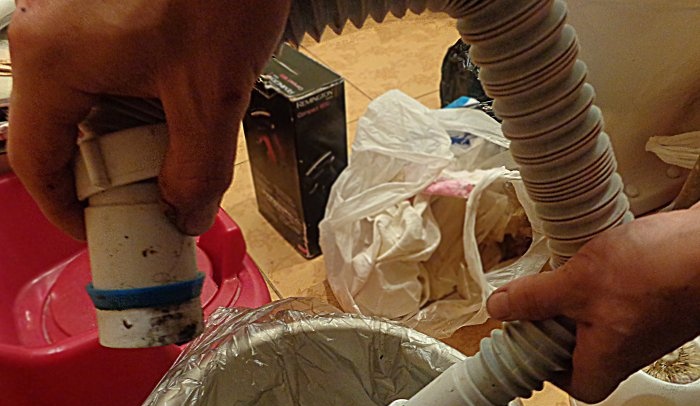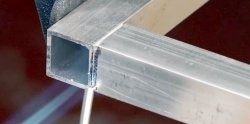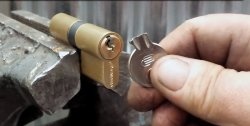How to unclog a sink drain
If the water in the sink where you wash dishes or brush your teeth does not drain, you can clean the drain in three ways without having much experience as a plumber.
The most common and inexpensive way to clean a sink at home, at a party, or at work is “cleaning with a twig.” It can be easily found on the street in the nearest yard.
The twig should be unbreakable, flexible, and suitable for the diameter of the holes in your drain bowl. Length from 30 to 40 cm.
Inserting the twig into one of the holes in the drainage bowl, turn it clockwise with rotational movements (the action can be compared to twisting the handle of a meat grinder).
Scrolling is necessary; it will allow you to wrap as much dirt as possible onto the rough surface of the twig, preventing the passage of water in the sink.
Such movements must be made in each hole of the drain bowl.
Surely, every home has a plunger. If you don't have a plunger on hand, get one at work or borrow one from a neighbor. The method of cleaning a sink with a plunger can be an addition to the first method.The plunger should be easy to use, and its working surface should be similar to a suction cup in its action.
Before we get to work, we plug the overflow hole in the sink tightly (using a flat-head screwdriver and a piece of cloth) to further create a vacuum effect inside the hollow sewer system.
We pour water (not hot, so as not to get burned), after plugging the drain hole with a plunger, if there is no water in the sink at the moment.
When working with a plunger, try not to push the water forward, as many people are accustomed to thinking, but to pull all the water out of the sewer. The forward movement should be insignificant so that the plunger is simply attracted to the surface of the sink by its weight, like a suction cup. Working with a plunger involves pulling the plunger towards you and creating suction under the surface of the plunger.
As a result of your work with the plunger, the clog should come out to the surface of the sink, and not be pushed further.
The sewer drain under the sink (hydraulic seal), as a rule, comes in two versions:
In this case, we will show how to clean a drain using the example of a siphon flask with corrugation. You need to prepare a trash can or basin in advance, and perform all further actions on it.
We disconnect the “glass” (siphon flask) from the outlet and corrugation by unscrewing the two nuts.
The release is, in simple terms, the drain cup that we mentioned in the first method. There is no need to remove the outlet, since we have already cleaned it with a twig (according to the instructions in the first method).
Our task is to clean the flask. To do this, unscrew the lid at the bottom of the “glass”.
We take a flat thin screwdriver and clean the inside of the flask from dirt. Then screw the lid back on. Let's start cleaning the corrugation.
We disconnect it from the sewer line located in the floor.
We try to shake out the contents of the corrugation into a bucket.
Having cleaned the flask with the corrugation, we put everything back in place in the order in which we took it apart (insert the corrugation into the sewer line, connect the siphon flask to the outlet, then to the corrugation).
Cleaning with a twig
The most common and inexpensive way to clean a sink at home, at a party, or at work is “cleaning with a twig.” It can be easily found on the street in the nearest yard.
The twig should be unbreakable, flexible, and suitable for the diameter of the holes in your drain bowl. Length from 30 to 40 cm.
Inserting the twig into one of the holes in the drainage bowl, turn it clockwise with rotational movements (the action can be compared to twisting the handle of a meat grinder).
Scrolling is necessary; it will allow you to wrap as much dirt as possible onto the rough surface of the twig, preventing the passage of water in the sink.
Such movements must be made in each hole of the drain bowl.
Cleaning with a plunger
Surely, every home has a plunger. If you don't have a plunger on hand, get one at work or borrow one from a neighbor. The method of cleaning a sink with a plunger can be an addition to the first method.The plunger should be easy to use, and its working surface should be similar to a suction cup in its action.
Before we get to work, we plug the overflow hole in the sink tightly (using a flat-head screwdriver and a piece of cloth) to further create a vacuum effect inside the hollow sewer system.
We pour water (not hot, so as not to get burned), after plugging the drain hole with a plunger, if there is no water in the sink at the moment.
When working with a plunger, try not to push the water forward, as many people are accustomed to thinking, but to pull all the water out of the sewer. The forward movement should be insignificant so that the plunger is simply attracted to the surface of the sink by its weight, like a suction cup. Working with a plunger involves pulling the plunger towards you and creating suction under the surface of the plunger.
As a result of your work with the plunger, the clog should come out to the surface of the sink, and not be pushed further.
Cleaning the flask-siphon and corrugations
The sewer drain under the sink (hydraulic seal), as a rule, comes in two versions:
- Using a curved corrugation in the shape of the letter “w”, a corrugated tube.
- Using a siphon flask in the form of a “glass” and the same corrugation.
In this case, we will show how to clean a drain using the example of a siphon flask with corrugation. You need to prepare a trash can or basin in advance, and perform all further actions on it.
We disconnect the “glass” (siphon flask) from the outlet and corrugation by unscrewing the two nuts.
The release is, in simple terms, the drain cup that we mentioned in the first method. There is no need to remove the outlet, since we have already cleaned it with a twig (according to the instructions in the first method).
Our task is to clean the flask. To do this, unscrew the lid at the bottom of the “glass”.
We take a flat thin screwdriver and clean the inside of the flask from dirt. Then screw the lid back on. Let's start cleaning the corrugation.
We disconnect it from the sewer line located in the floor.
We try to shake out the contents of the corrugation into a bucket.
Having cleaned the flask with the corrugation, we put everything back in place in the order in which we took it apart (insert the corrugation into the sewer line, connect the siphon flask to the outlet, then to the corrugation).
Similar master classes
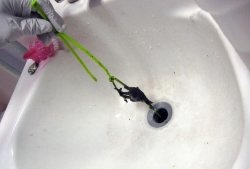
Cleaning sink and bathtub drains with a nylon device
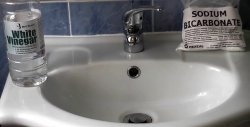
Cleaning drains with baking soda and vinegar
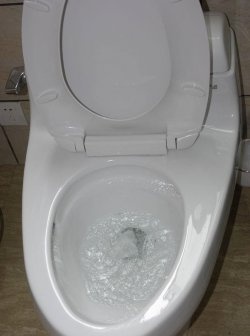
How to unclog a clogged toilet without a plunger
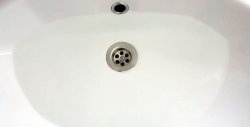
How long does it take for water to drain from the sink? We will clear the clog in 5 minutes
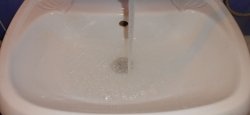
How to clear a clogged sink at home?
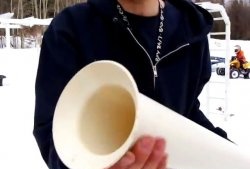
How to make a skirt (funnel) at the end of a PVC pipe
Particularly interesting
Comments (0)

